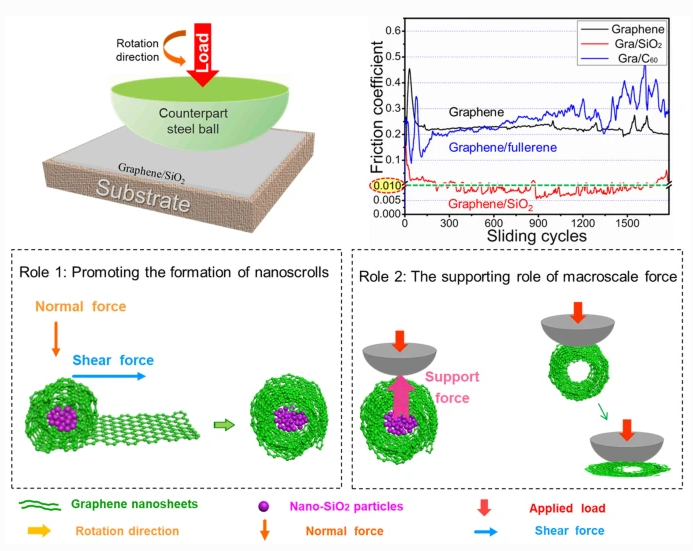Abstract
Recent studies have reported that adding nanoparticles to graphene enables macroscale superlubricity to be achieved. This study focuses on the role of nanoparticles in achieving superlubricity. First, because graphene nanoscrolls can be formed with nanoparticles as seeds under shear force, the applied load (or shear force) is adjusted to manipulate the formation of graphene nanoscrolls and to reveal the relationship between graphene-nanoscroll formation and superlubricating performance. Second, the load-carrying role of spherical nano-SiO2 particles during the friction process is verified by comparison with an elaborately designed fullerene that possesses a hollow-structured graphene nanoscroll. Results indicate that the incorporated nano-SiO2 particles have two roles in promoting the formation of graphene nanoscrolls and exhibiting load-carrying capacity to support macroscale forces for achieving macroscale superlubricity. Finally, macroscale superlubricity (friction coefficient: 0.006-0.008) can be achieved under a properly tuned applied load (2.0 N) using a simple material system in which a graphene/nano-SiO2 particle composite coating slides against a steel counterpart ball without a decorated diamond-like carbon film. The approach described in this study could be of significance in engineering.

Keywords Plus:GLOBAL ENERGY-CONSUMPTIONFRICTIONGRAPHENEWEARTRIBOLOGY
Published in FRICTION;10.1007/s40544-021-0532-2,AUG 2021


